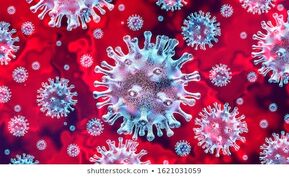HOW THE VIRUS ATTACKS:
Here’s what experts have learned about the progression of the coronavirus.
The genetic code of the coronavirus that causes COVID-19 is only about 30,000 characters long, but what a story it tells.
Those nucleotides conceal secrets of the virus’ past, including its origins, its passage among families and its journey to distant ports. They signal how long it has been at large and whether it can hide by infecting people who show no outward signs of illness. And they can point the way to medicines, vaccines and public health strategies.
Unlocking all of that requires a combination of teamwork and technology that didn’t exist when the SARS epidemic broke out nearly 20 years ago. But today, geneticists are indispensable players in the international game of whodunit. “Now we can really get a much fuller version of that puzzle,” said Dr. Liliana Brown of the National Institute of Allergy and Infectious Diseases.
For much of the 20th century the central technique of germ-hunting has been a labor-intensive process called contact tracing. It starts with a search for the person first infected. Then it expands to the people those initial patients interacted with, then the ones they interacted with, and so on.
With luck, the result is a time-stamped map of the germ’s spread that includes every case of illness, death and recovery. These investigations provide insights about how a pathogen spreads, how deadly it is, and what measures could slow its transmission.
Yet contact tracing relies on memories, candor, and an absence of chance encounters with strangers. With genomics, scientists can follow the progression of mutations from patient to patient and establish relatedness among them. That can fill in gaps left by memory lapses or concealment. It can even flag new means of transmissions between distant strangers — through vents or pipes linking apartments, for instance.
“Genomics has completely transformed our ability to track viruses and understand their spread,” said Kristian Andersen, an infectious disease and genomics expert.
A virus gives up its secrets one mutation at a time. As it passes from host to host, or population to population, it sheds, gains or revises the sequences that define it.
Armed with computers and a maturing grasp of how genes function and change, geneticists search for data that will give them the upper hand. To do so, they break down the DNA or RNA sequences of viral specimens collected from different people or animals. Then they stack those sequences on top of each other to see how and where they have changed. By looking around the common ancestor of all samples, they may find an outbreak’s earliest patients.
That can help scientists determine when the virus first colonized humans and narrow the list of species that might have incubated it. They can glean insights about who infected whom, how quickly transmission occurred, and whether mutations made the virus more infectious or more lethal.
When the genetic diversity of samples seems improbably broad, researchers must explore new possibilities. Perhaps it has infected far more people than initially thought, but spread without causing symptoms. Maybe it launched multiple assaults on humans from its home base in animals. Or it could have been circulating harmlessly in humans for years and recently acquired a mutation that causes its hosts to become ill.
In just over a decade, this type of genetic sleuthing — scientists call it phylodynamic analysis — has changed the way disease detectives investigate an outbreak.
Genomic analyses of the Ebola virus turned up several points during its three-year reign of terror when it appeared to get better at jumping from person to person.
Studies of the Zika virus revealed that it became harmful to fetuses in 2013 in French Polynesia, more than a year before it triggered a wave of birth defects in Brazil.
Genetic sequencing helped identify bats as the origin of the virus responsible for Middle East respiratory syndrome, and camels as the animals that conveyed it to humans.
So far, Chinese scientists have sequenced the full genomes of at least 115 samples of the COVID-19 coronavirus and shared the details with an international community of geneticists. Combining genetic sequencing technology with old-fashioned disease hunting has given scientists a rare glimpse of evolution in near real time. Observing it in long-lived organisms such as humans would take thousands of years. By sifting through samples from a single outbreak, researchers can capture the subtle process of adaptation. Even a tiny shift might reveal a pivotal moment when the virus mutates in ways that increase its fitness or spell its demise, said Dr. Marc Suchard, a biomathematician .
The details of a virus’ life cycle can help answer some of the most fraught questions: Who should get vaccinated first? Will a quarantine work? When do comforting cultural practices endanger a community’s safety? In a world of relentless viral threats, he said, the results could be lifesaving.
EYES , NOSE, MOUTH
Viral particles enter through nose, mouth or eyes, then travel to the back of nasal passages and throat. There, it hijacks the metabolism of the cell, allowing the virus to burst out and infect other cells, replicating by the millions.
LUNGS
Virus crawls down bronchial tubes and lungs, inflaming mucous membranes and damaging lung sacs. Swelling and impaired flow of oxygen can cause lungs to fill with fluid, pus and dead cells.
GUT, DIGESTIVE TRACK
Virus spreads through mucous membranes, and may be able to infect cells in the gastrointestinal system, causing diarrhea or indigestion. Its RNA has been found in stool, but it’s unclear whether infectious virus can persist there.
BLOODSTREAM
Virus can make 10,000 copies of itself in a cell within hours. Within a few days, there are hundreds of millions of viral particles in every teaspoon of blood. There may also be some inflammation in small blood vessels.
ORGANS
The virus can land on organs like the heart, kidney and liver, resulting in inflammation that may cause the organs to malfunction. As a result, damage can be inflicted not just by the virus but by person’s own immune system.
“Genomics has completely transformed our ability to track viruses and understand their spread.”
Kristian Andersen, infectious disease and genomics expert



 RSS Feed
RSS Feed